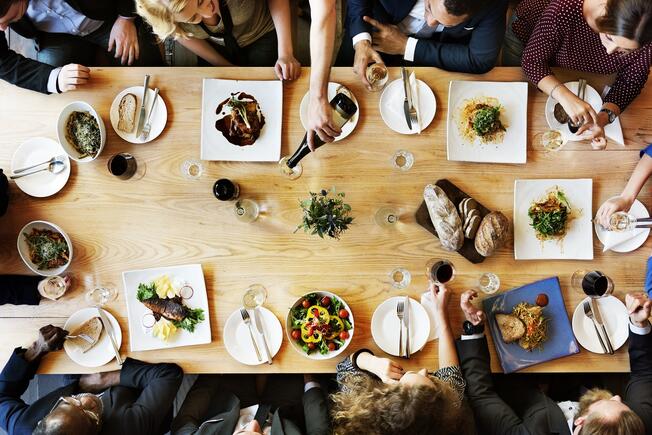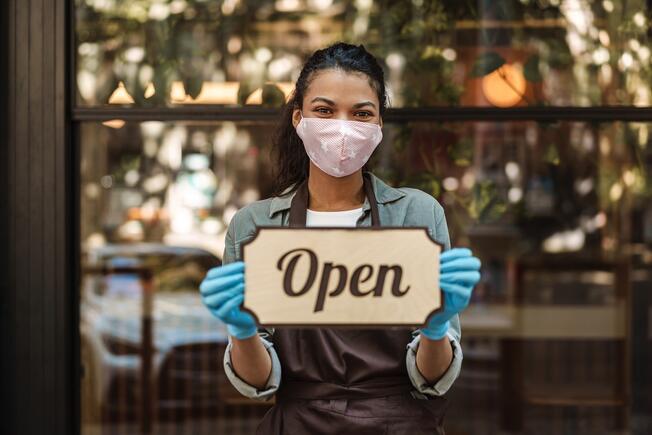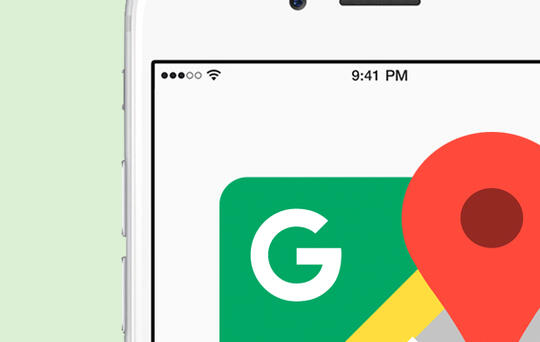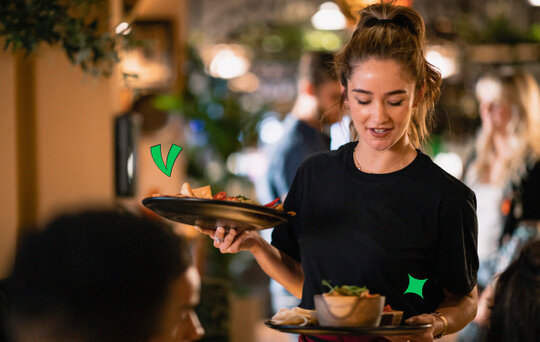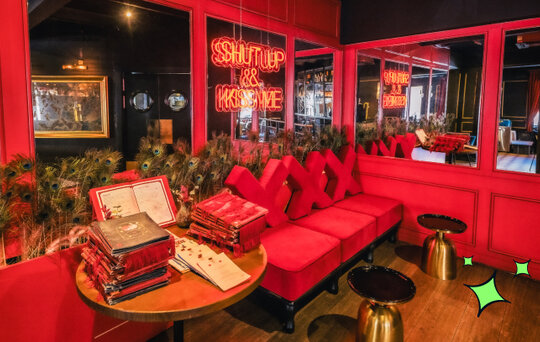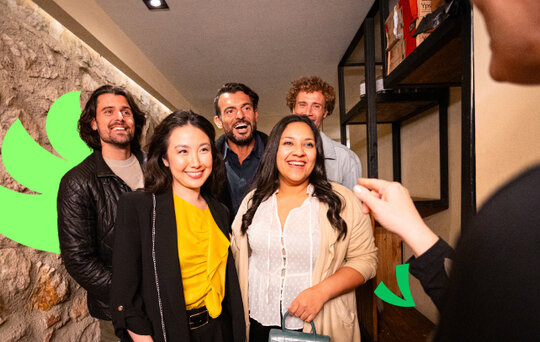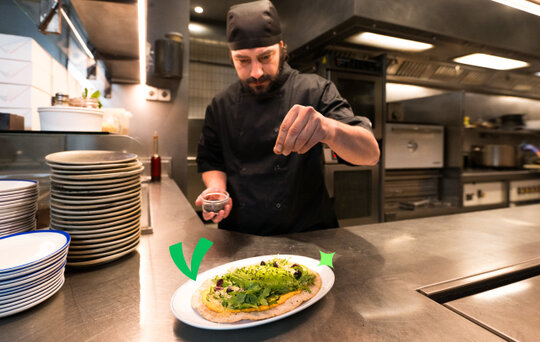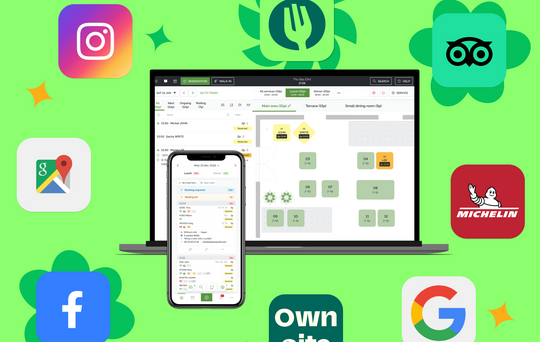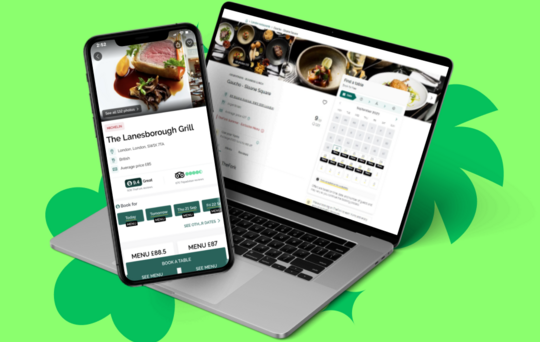The benefits of retaining customers and how to do it

- • The importance of customer retention in the restaurant industry
- • Using customer feedback wisely
- • Try TheFork Manager today
- • Creating a positive environment or the importance of being nice to retain your restaurant’s customers
- • Encouraging engagement for customer retention
- • Implementing a Customer Loyalty Program and rewarding returning customers
- • Empty tables and ever-increasing costs?
The importance of customer retention in the restaurant industry
For many restaurants, acquiring new customers is the main goal of their marketing campaigns. While attracting new trade is critical to the growth of your business, it is perhaps even more important to be able to maintain the customers you already have by investing in strategies that reduce customer churn and increase retention rates.
Studies show that investing in strategies to attract new customers is significantly more costly than retaining existing ones. What’s more, repeat customers tend to spend more on average and are more open to trying new products or services than new customers, making their trade more profitable.
Loyal customers are more likely to recommend your restaurant to their social circle. Why not let customers work for you by providing great word-of-mouth advertising and, in turn, driving the acquisition of new customers without any effort on your part?
But what makes a customer return to the same restaurant time and time again, when dining options abound - especially in major cities? In short: how do you cultivate customer loyalty for long-term success?
While there’s no single answer, you can start by implementing a multi-pronged customer retention strategy with the help of our tips and tricks.
Using customer feedback wisely
Inserire la keyword customer retention almeno 2 volte in questo paragrafo.
To retain customers, it is important to understand what they like and dislike about your dining experience. Two words: customer feedback. After all, how can you know if you don’t ask?
Face-to-face vs written feedback
One subtle way to get customer feedback is to train staff to ask clients about their dining experience both during and at the end of the meal.
Encourage open questions about their general experience, or what could be done better, rather than just asking if they enjoyed their meal. If a customer is feeling frustrated with an issue, don’t panic! This gives you the chance to take care of the problem before a customer walks away unsatisfied.
A further benefit of face-to-face feedback is that the meal will be fresh in guests’ minds. This enables them to provide you with detailed insight into their meal without having to fill in a form, meaning you don’t have to combat drop-off rates. In-person feedback also provides opportunities to build strong relationships with customers and understand their preferences.
Train your staff to always listen actively and respond politely to praise and criticism. To record guests’ feedback, create a formal channel where they can leave their feedback based on their personal experience.
While many people will be happy to tell you what they like, not everyone feels comfortable voicing dissatisfaction. Give customers the option of leaving written positive and negative reviews in a visible, accessible place. You can even invite them to engage with you through your TheFork or Tripadvisor restaurant profiles or your social media pages. Try to promote an online feedback form which allows you to reward customers with a free menu item or a price reduction for their response.
Above all, make sure to thank your customers for taking the time to share their thoughts with you. You can do it either in person or with a written comment. Take their praise or criticism seriously, as this can be an effective way to identify areas of improvement and guarantee a focused approach to customer retention.
Over time, you should glean valuable insights about portion sizes, popular dishes, and ones to phase out. Last but not least, you will start to get a sense of the most important thing, namely if people are happy with how they have been treated in your establishment.
Try TheFork Manager today
Creating a positive environment or the importance of being nice to retain your restaurant’s customers
Inserire la keyword customer retention almeno 2 volte in questo paragrafo.
Above and beyond a certain quality or type of food, what many people are looking for in a restaurant experience is a genuinely positive vibe. Guests love to go to places where they feel comfortable and catered so that they can relax and enjoy their time with friends or family.
Creating a positive atmosphere goes deeper than decor, or how formal or casual your restaurant is. How you and your staff engage with customers on a human level is far more important to making customers feel comfortable in your space.
So while great food, good lighting, attractive interiors, and comfortable seating are features that contribute to a feel-good atmosphere, interactions with your guests are crucial for your customer retention strategy.
Is your staff consistently friendly and welcoming? Not only when customers walk through the door, but during the entire meal and right up to the time they pay the bill. Do your guests feel comfortable asking a question? Is it easy for them to catch your attention? Is there always a staff member who warmly says goodbye to your customers at the end of their meal, and thanks them for their visit?
Remember that guests are more likely to forgive a longer than usual wait between dishes on a busy evening if your staff takes the time to apologize sincerely for the issue.
However, no matter how good your food is, most people will not come back if they feel they’ve been ignored, forgotten or talked to rudely or impatiently. This is even more important for return customers, who should be celebrated and never taken for granted.
Take the time to train your staff to engage with customers in a warm, authentic manner.
Low churn rates and high customer retention can only be achieved by paying attention to guests’ needs. Encourage employees to recognise and greet your repeat customers; even if they can’t quite remember their names, diners should know that you are happy to see them again.
Encouraging engagement for customer retention
Think about your restaurant as a community where customers should be welcomed as valued members.
Always try to create a consistently positive atmosphere, where each guest feels heard, seen and appreciated. To enhance your customer retention rate, try to seize on opportunities to connect with your regulars on a deeper level.
This could include arranging special events at a slightly discounted price, such as:
- Wine tastings
- Holiday meals
- Themed evenings
Treat these events as opportunities to get to know your loyal customers and be ready to share your restaurant’s story or vision if they seem interested. Chances are the exchange will be mutually beneficial.
Are you thinking about implementing an online customer retention strategy? Consider sending a short quarterly newsletter featuring signature recipes, menu changes, or other news to reconnect with interested and loyal guests.
Implementing a Customer Loyalty Program and rewarding returning customers
Many restaurants have very successful customer retention programs. Nowadays, online customer loyalty programs have become increasingly common as they provide a competitive advantage to dining establishments.
A simple way to set this up and enhance the overall customer experience is to offer a punch card with rewards for regular guests, such as:
- A discounted meal
- An event invitation
- A free meal item
Are you looking for a digital loyalty program? Discover YUMS, TheFork loyalty program to boost your restaurant’s bookings.
Empty tables and ever-increasing costs?
- The importance of customer retention in the restaurant industry
- Using customer feedback wisely
- Try TheFork Manager today
- Creating a positive environment or the importance of being nice to retain your restaurant’s customers
- Encouraging engagement for customer retention
- Implementing a Customer Loyalty Program and rewarding returning customers
- Empty tables and ever-increasing costs?


